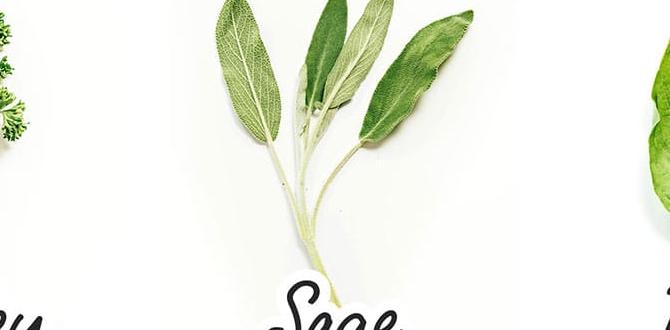Have you ever seen a hibiscus flower? Their bright colors can light up any garden! If you want to grow hibiscus outdoors, you’ll need to know a few important tips. Caring for hibiscus outdoors can be fun and rewarding.
Imagine stepping outside to find your hibiscus blooming beautifully. It makes your space feel alive and joyful. But how do you keep these lovely flowers happy? Regular watering and the right amount of sunlight are key.
Did you know that hibiscus plants can grow quite tall? Some can reach over six feet! This makes them perfect for creating shade in your yard. However, they can be a bit picky about their care.
In this article, we’ll explore simple ways to care for hibiscus outdoors. Whether you’re a garden expert or just starting, you’ll learn something new. Get ready to make your hibiscus thrive!
Essential Tips To Care For Hibiscus Outdoors Effectively

Care for Hibiscus Outdoors
Caring for hibiscus outdoors is fun and easy! These vibrant flowers thrive in warm sunny spots and need well-drained soil. Did you know hibiscus loves water but hates soggy feet? To keep them blooming, give them deep, regular drinks. Pruning in spring encourages growth and more flowers. Watch out for pests like aphids, which can harm them. With the right care, you can enjoy stunning blooms all summer long! Who wouldn’t love that?Choosing the Right Location
Importance of sunlight requirements. Ideal soil conditions for hibiscus growth.Picking the right spot for hibiscus is key for their growth. These beautiful plants need plenty of sunlight to flourish. Aim for a location that gets at least six hours of direct sun daily. Besides light, the soil matters too. Hibiscus prefers well-draining, rich soil. This keeps their roots healthy and happy.
What kind of sunlight do hibiscus need?
Hibiscus needs at least six hours of direct sunlight each day. This helps them grow strong and colorful.
Ideal soil conditions for hibiscus:
- Well-draining soil
- Rich in nutrients
- pH level around 6.0 to 7.0
Watering Techniques
Best practices for watering frequency. Signs of overwatering and underwatering.Water your hibiscus with care! Best practice suggests keeping the soil moist but not soggy. Aim for watering every 3 to 5 days, depending on the rain. If your plant looks droopy, it might need a drink. On the flip side, if leaves turn yellow and fall off, you may be giving it too much water. Learning these signs is key.
| Watering Issue | Signs | Action |
|---|---|---|
| Underwatering | Droopy leaves | Water more |
| Overwatering | Yellow leaves | Water less |
It’s like finding the perfect balance on a seesaw—too much or too little can tip the plants over. So, humor your hibiscus by giving it just the right amount of water!
Soil Preparation and Fertilization
Recommended soil types for outdoor hibiscus. Types of fertilizers and their application schedules.Healthy hibiscus plants need good soil and nutrients. Use well-drained soil with organic matter. A mix of sandy loam works best. This helps roots grow strong. You should fertilize your hibiscus during the growing season. Use a balanced fertilizer, like 10-10-10, every 4-6 weeks. This will keep your plants vibrant and blooming.
What type of soil is best for hibiscus?
Well-drained soil with organic matter, such as compost or peat moss, is ideal for hibiscus.
Fertilizer Guidelines
- Use a balanced fertilizer, like 10-10-10.
- Fertilize every 4-6 weeks during spring and summer.
Pest and Disease Management
Common pests affecting outdoor hibiscus and treatment. Preventative measures for diseases.Pests can harm your outdoor hibiscus. Common pests include aphids and spider mites. These tiny bugs suck sap from leaves, causing harm. For treatment, wash them off with water or use insect soap.
- Aphids: Small and green, they gather in groups.
- Spider Mites: Tiny webs appear, and leaves may turn brown.
What are the common pests that affect outdoor hibiscus?
Aphids and spider mites are the most common pests harming outdoor hibiscus. Regularly check your plants to catch these pests early.Pruning and Maintenance
Best times to prune hibiscus for optimal growth. Techniques for encouraging healthy blooms.Pruning your hibiscus is like giving it a fresh haircut; it helps it grow better! The best time to prune is in early spring. That’s when the plant is waking up from its winter nap and is ready for a trim. You want to cut back about one-third of the plant. This encourages healthy blooms and keeps it looking nice. Use sharp scissors to make clean cuts—no one likes a messy haircut! A happy hibiscus means more flowers, and who doesn’t love flowers?
| When to Prune | How Much to Prune |
|---|---|
| Early Spring | One-third of the plant |
Seasonal Care Tips
Preparing hibiscus for winter in colder climates. Seasonal fertilization and watering routines.Winter can be tough for hibiscus plants in colder areas. Before the frost arrives, protect them by bringing pots inside or covering them with frost cloth. They love warm weather! For healthy growth, use a balanced fertilizer in spring and summer. Water them well, but don’t drown them—plants can’t swim! A simple schedule might look like this:
| Season | Fertilizer | Watering |
|---|---|---|
| Spring | Balanced | Weekly |
| Summer | Balanced | Every 3 days |
| Fall | Low-nitrogen | When dry |
Follow these tips for your hibiscus, and they’ll reward you with beautiful blooms! Remember, they hate to be soggy or chilly. Keep it cozy for happy hibiscus!
Companion Planting with Hibiscus
Benefits of pairing hibiscus with other plants. Recommended companion plants for hibiscus gardens.Bringing friends to your hibiscus garden can be fun! Pairing hibiscus with other plants can help them grow better. Some buddies release special nutrients that make the soil happy. Others can scare off pesky bugs who think hibiscus looks like a snack. For a thriving garden, try geraniums or marigolds. They love hanging out with hibiscus and help keep the area lively.
| Companion Plant | Benefit |
|---|---|
| Geraniums | Attracts bees and butterflies! |
| Marigolds | Keeps harmful pests away. |
| Basil | Improves flavor and repels flies. |
So, grab your friends and watch your garden bloom! Planting hibiscus with buddies offers many rewards, making your outdoor space even more fabulous!
Regional Considerations
Adapting care practices based on climate zones. Understanding local variations in growth conditions.Hibiscus plants love warm weather, but what works in one place might flop in another. For example, if you live in a humid area, your hibiscus will probably bloom like a champ. However, in dry or cooler spots, you may need to tweak care methods to keep it happy.
| Climate Zone | Care Tips |
|---|---|
| Warm & Humid | Water regularly and watch for pests! |
| Cool & Dry | Use mulch to retain moisture and insulate roots. |
Every spot has its quirks. Understanding local growth conditions is key. Check if your area gets lots of sun or sneaky shade. Remember, hibiscus plants are like people—they thrive when they feel at home!
Conclusion
In summary, caring for hibiscus outdoors is easy and fun! Make sure they get plenty of sunlight and water regularly. Fertilize them every few weeks for healthy blooms. Protect them from pests and cold weather, too. With these tips, you can enjoy beautiful hibiscus flowers. Explore more resources to learn even more about hibiscus care!FAQs
Sure! Here Are Five Related Questions About Caring For Hibiscus Outdoors:Caring for hibiscus outdoors is fun! First, plant them in a sunny spot. They need at least six hours of sunlight each day. Water them regularly, especially when it’s hot. Make sure the soil is well-drained so the roots don’t get too wet. Lastly, check for bugs and remove any that you see. Enjoy your beautiful flowers!
Sure! Please provide the question you’d like me to answer.
What Are The Optimal Sunlight Conditions For Growing Hibiscus Outdoors?Hibiscus plants love sunlight! They need at least six hours of direct sunlight each day to grow well. If you can, plant them in a sunny spot in your yard. The more sun they get, the bigger and brighter the flowers will be! Just make sure they don’t get too hot or dry.
How Often Should You Water Hibiscus Plants In Outdoor Gardens?You should water hibiscus plants every few days. They like their soil to stay moist but not soggy. If it’s hot or windy, water them more often. Always check the soil first. If it feels dry an inch down, it’s time to water!
What Type Of Soil Is Best Suited For Hibiscus Plants Grown Outdoors?Hibiscus plants like well-draining soil. This means the soil should not hold too much water. You can mix some sand or perlite with regular potting soil. This helps the roots stay healthy and grow strong. Make sure the soil is rich in nutrients too, to keep your hibiscus happy!
How Can You Protect Outdoor Hibiscus From Pests And Diseases?To protect your outdoor hibiscus, check the leaves often for bugs. You can spray them off with water. Keep the area clean by removing dead leaves. Make sure your plants get enough sunlight and water, so they stay healthy. If you see any sick leaves, cut them off to help the plant heal.
When Is The Best Time To Prune Hibiscus Plants For Optimal Growth And Flowering?The best time to prune hibiscus plants is in late winter or early spring. This is before new leaves and flowers start to grow. We can cut back dead or weak stems to help the plant grow strong. Pruning at this time helps the hibiscus bloom more beautifully in the summer.








